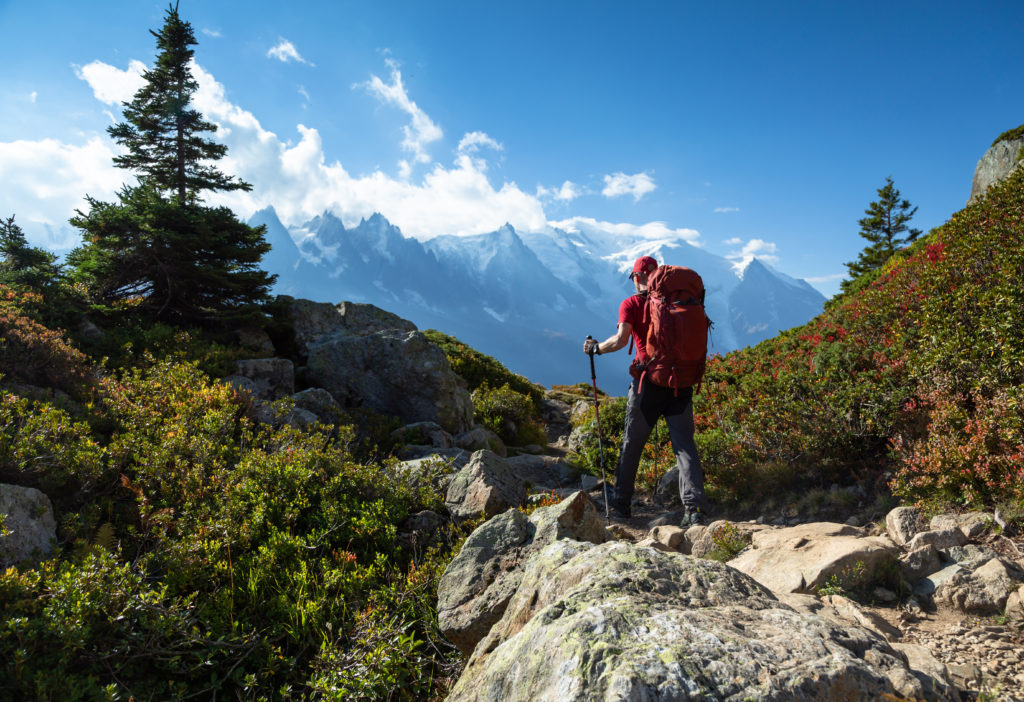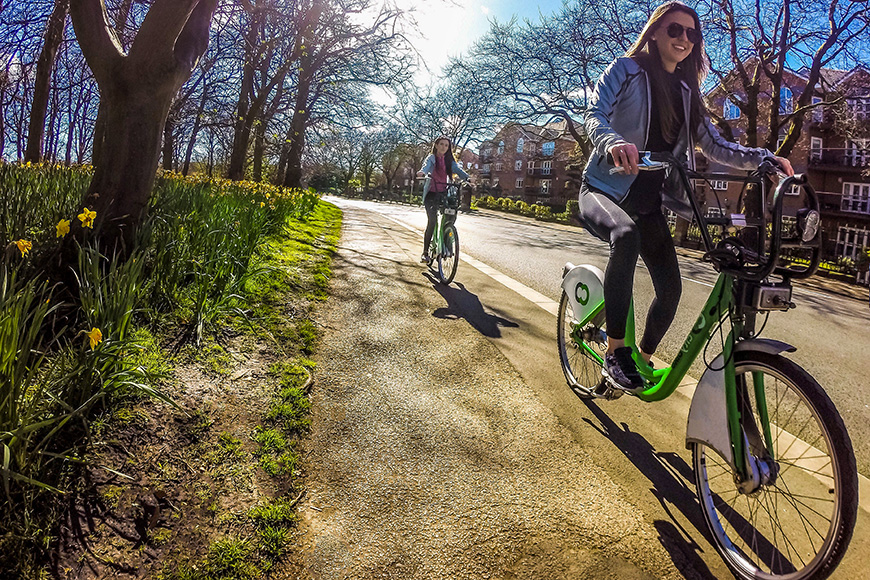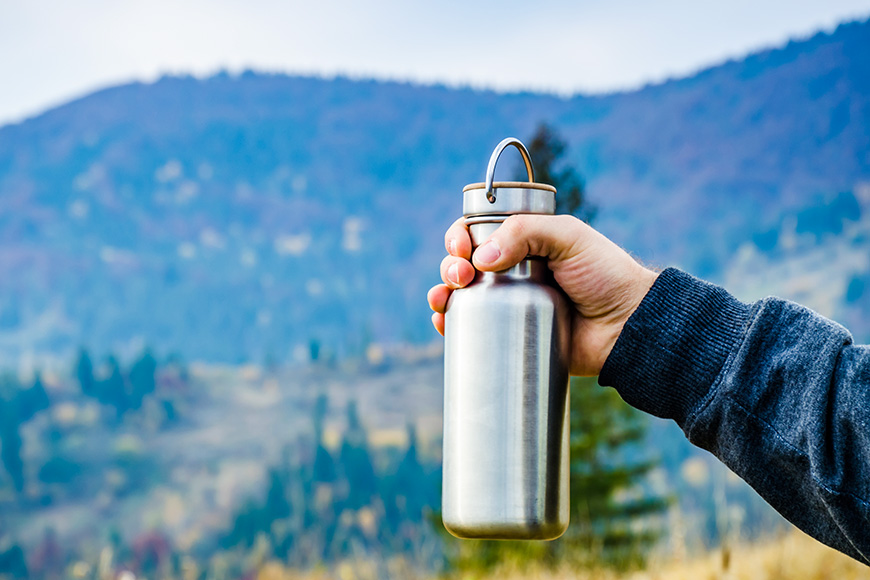Sustainable travel is more than a trend—for an increasing number of travelers, it’s as integral to trip planning as comparing flight prices and browsing hotel listings. Motivated by the idea that a planet this spectacular deserves the care of those who navigate it, travelers are taking easy, small steps that reduce the impact of their travels while protecting natural resources and supporting local economies.
How would you rate your travel sustainability? Here are 12 sustainable travel tips—including shopping local, getting off the beaten path, and offsetting your carbon footprint—to help you reduce the impact of your travels. This generation of travelers—and the next, and the next—will thank you for it.
Buy from Local Artists and Eat Local Food

Farmers’ markets are a great place to find locally produced art and food. Buying locally supports the economy and—because the goods haven’t travelled far to get to you—helps keep the carbon footprint low.
Support Businesses That Support Local Sustainability
Before booking any tour, ask in advance about group size (smaller has less of an impact), whether locals guide the tours, and how the operator gives back to the community and prevents harming ecosystems. When you visit the Amazon, for example, hire a tour company that helps support indigenous communities most directly affected by deforestation. Wherever you go, look for locally owned hotels that compost and recycle or use alternative energy sources. This list of environmentally friendly tour operators and hotels is a great place to start when you’re considering how to travel sustainably.
Make a Donation to Help Preserve Natural and Historic Sites
Instead of leaving a few coins during your visit, consider a more significant contribution. If you’re hiking Borneo, for instance, paying more than your park fee or hiring a sustainable tour operator will help convince the government that preserving the forest, rather than exploiting it, is good for business and may prompt conservation. Donating to the Sustainable Preservation Initiative helps poor communities leverage their historic sites responsibly so they can create self-reliance and economic stability to thrive.
Skip Activities That Negatively Impact the Environment or Community

As a result of climate change, many ski towns in the European Alps whose economies rely on winter tourism are now overusing snowmaking machines. Unfortunately, these machines only contribute to the escalation of global warming. Visit the Alps in summer for hiking instead, or find an alternate ski destination with natural snow. If you’re a fan of animal attractions, do a bit of investigating and visit only those that are true sanctuaries with high standards.
Pay a Little Extra if it Means Having Less of an Impact
For your next road trip, rent a hybrid or electric car. On your next cruise, try a smaller ship, which has a significantly smaller carbon footprint and produces less waste than a 6,000-passenger behemoth. It often doesn’t cost much more to travel more sustainably, but it can make a big difference in your personal impact.
Spend More Time in Less Touristy Attractions
Overdevelopment and overcrowding can be as threatening as climate change in the most popular destinations around the world. Spain’s Costa del Sol and Cambodia’s Angkor Wat temple complex are only a couple of examples of places where tourism’s footprint could cause irreparable damage. Seek alternative destinations. Instead of joining the hoards in Machu Picchu, visit the similar but lesser-known “lost” Inca city of Choquequirao. Instead of Ibiza or Majorca, go to Sardinia or Crete—larger islands that can handle more visitors.
Bike or Use Public Transit Instead of Driving or Hailing a Taxi

Bike-sharing programs in more than 1,000 cities around the world make it easier and cheaper than ever to explore urban destinations. Seeing a new destination by bike, public transit, or on foot reduces your impact and offers more opportunities for interacting with locals. Touring Florida’s everglades? Go minimal impact with a guided swamp walk.
Switch to Reef-Safe, Oxybenzone-Free Sunscreen
Harmful chemicals from sunscreen worn by swimmers and snorkelers contribute to the destruction of the Great Barrier Reef and other reefs around the world. Oxybenzone damages adult coral and deforms and kills new coral, reducing its ability to regenerate. Choose oxybenzone-free products or wear protective clothing when swimming and snorkeling.
Volunteer During Your Trip
See your travel destination from an entirely different perspective. As a volunteer rather than a traveler, you’ll learn more about the place you’re visiting and have a chance to be part of the sustainability solution. Consider participating in a conservation project or another cause that makes your heart sing. Check Transitions Abroad and Idealist for links to some organizations to consider for your volunteer vacation. But make sure your volunteer efforts will be helpful, not harmful, before you decide where to go.
Bring Your Own Water Bottle

According to the Sierra Club, the billions of plastic water bottles that end up in landfills each year will take up to 1,000 years to decompose. Invest in a stainless steel reusable bottle for your next trip. If the tap water in your destination isn’t safe to drink, purify it with a SteriPEN or water purification tablets. Another option: Pick up a gallon (or larger container) of water to keep in your room.
Offset Your Carbon Footprint
Contribute to a carbon offsetting company and, on your behalf, someone will plant a tree or contribute to another carbon sequestration project that can absorb the toxic carbon dioxide emitted for every mile you travel, netting a zero-sum total. Some popular destinations even have their own offset programs.
Stick to the Trail
It’s tempting to step over the roped-off area to get the perfect photo for Instagram. But when millions of tourists follow suit, the effect is substantial. Whether you’re at a UNESCO World Heritage site or a local park, preserve the land by staying on the marked trails. Many ecosystems are so delicate that even a couple steps across the greenery or light brush against the coral can cause irreparable damage.
More from SmarterTravel:
- How This Tiny Island Could Change Sustainable Travel
- 5 Unique Travel Fabrics That Are Ethically Sourced
- 13 Best Places to Travel Alone
Jamie Moore is a regular contributor to SmarterTravel. Her articles have appeared on USA Today, Yahoo Travel, Huffington Post, and WestJet.
Editor’s note: This story was originally published in 2019. It has been updated to reflect the most current information.
You Might Also Like:
• The 10 Best Fall Train Rides in the U.S.• 8 of the World’s Most Gorgeous Glamping Destinations
• 10 Trips Millennial Travelers Will Love
• 60 Green Travel Resources Every Responsible Traveler Should Know
• The Best Reusable Alternatives for Disposable Items
We hand-pick everything we recommend and select items through testing and reviews. Some products are sent to us free of charge with no incentive to offer a favorable review. We offer our unbiased opinions and do not accept compensation to review products. All items are in stock and prices are accurate at the time of publication. If you buy something through our links, we may earn a commission.
Related
Top Fares From
Today's Top Travel Deals
Brought to you by ShermansTravel
4-Night Grand Canyon & Las Vegas...
Great Value Vacations
 vacation
$772+
vacation
$772+
Greek Isles: Luxe Last-Minute, 7-Nt, All-Incl....
Regent Seven Seas Cruises
 cruise
$8599+
cruise
$8599+
Asia: Business Class Round-Trip Flights to...
Business-Class
 Airfare
$2249+
Airfare
$2249+




